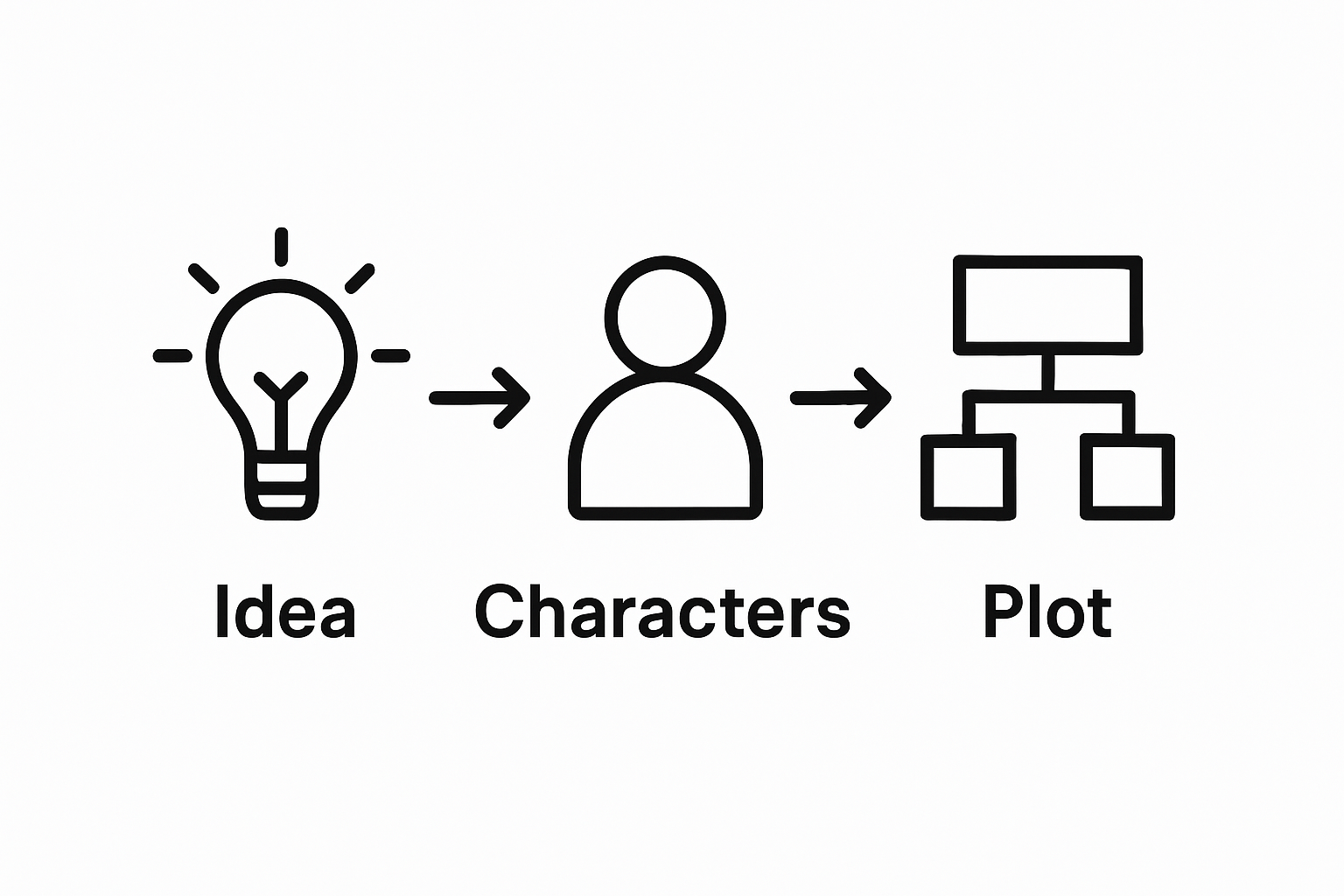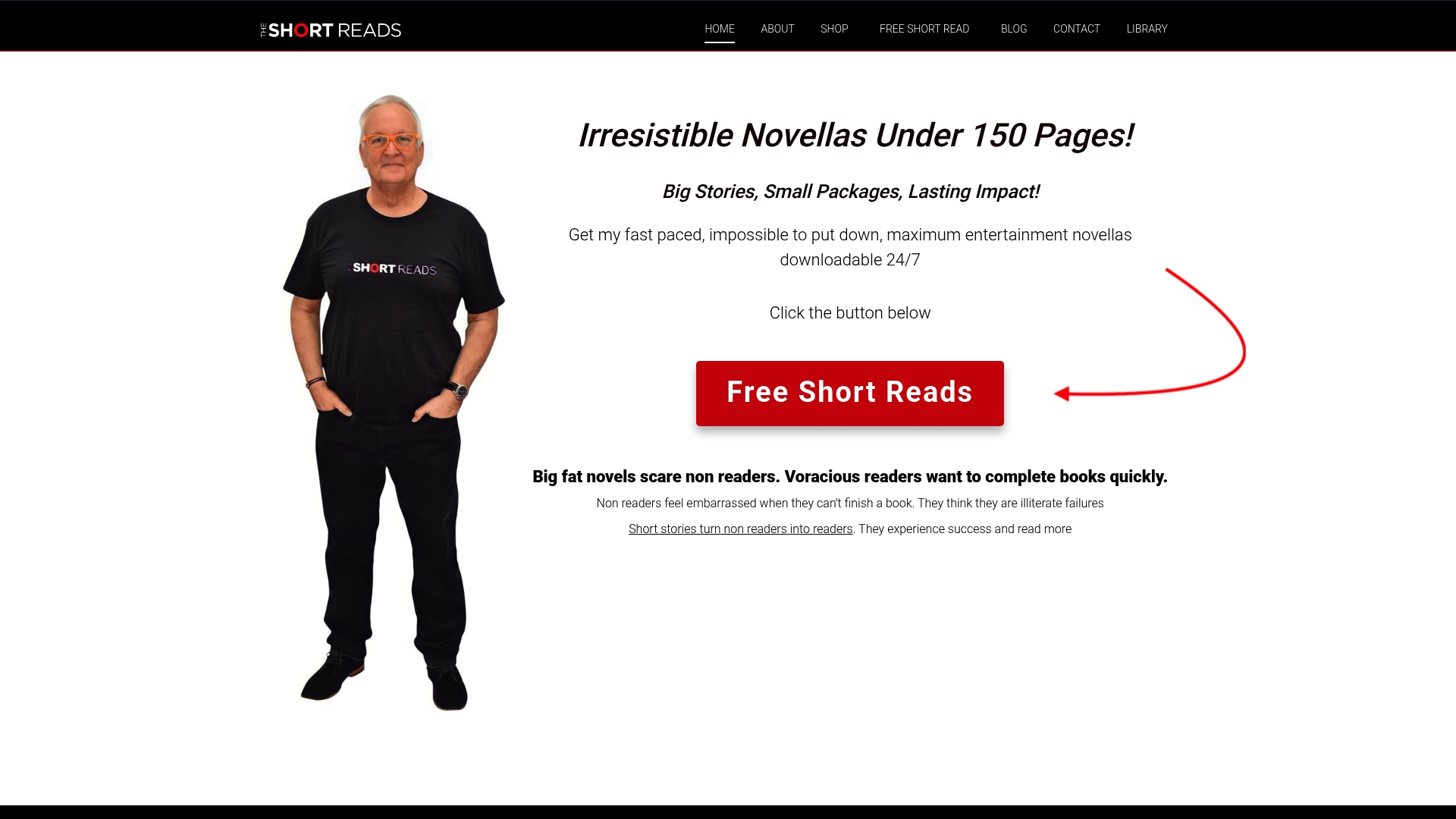How to Outline a Short Story in 5 Easy Steps

Writing a short story might sound simple but nailing every element takes real craft. Some guides claim outlining is optional and you can just write as you go. Yet studies show that outlining boosts story clarity and emotional impact by over 40 percent. Turns out, the strongest stories are almost always rooted in a carefully built outline and not just creative inspiration.
Table of Contents
- Step 1: Identify Your Core Idea
- Step 2: Develop Your Characters
- Step 3: Map Out The Plot Structure
- Step 4: Create Scenes And Settings
- Step 5: Review And Refine Your Outline
Quick Summary
| Key Point | Explanation |
|---|---|
| 1. Identify your core idea | Understanding the essential theme is crucial for narrative clarity and direction. It shapes every aspect of your story writing process. |
| 2. Develop multidimensional characters | Rich character development transforms plots into engaging experiences. Characters should possess complex motivations and backgrounds that resonate with readers. |
| 3. Map out plot structure | A clear plot structure creates a coherent narrative arc, guiding emotional progression and maintaining reader engagement throughout the story. |
| 4. Create purposeful scenes and settings | Each scene should reveal crucial character details and advance the plot, creating an immersive experience through rich sensory details. |
| 5. Review and refine your outline | Regularly revising your outline ensures clarity and emotional impact. Remove elements that don’t contribute meaningfully to the overall narrative arc. |
Step 1: Identify Your Core Idea
Every compelling short story begins with a spark an essential idea that drives the entire narrative. Identifying your core idea is the foundational step in creating a memorable and impactful story. Think of this initial concept as the heartbeat of your narrative the central theme or emotional core that will guide every subsequent decision in your writing process.
Start by asking yourself fundamental questions about the story you want to tell. What human experience or emotion are you exploring?
What central conflict or transformation will your characters undergo? This is not about detailed plot points yet but about understanding the fundamental essence of your story.
For instance if you want to write about resilience your core idea might revolve around how an individual overcomes seemingly insurmountable challenges.
Developing Your Core Concept
To crystallize your core idea consider using a structured brainstorming approach.
Grab a notebook or open a digital document and spend 15 to 20 minutes free writing about your initial concept. Don’t worry about perfect sentences or grammatical precision just let your thoughts flow. According to Columbia College’s writing resources, exploring your initial concept through unstructured writing can help reveal deeper layers of your narrative.
As you explore your idea look for the emotional resonance. A powerful core idea isn’t just about events but about the underlying human experience.
Ask yourself what universal truth or feeling you want readers to experience. Is it hope in the face of despair? The complexity of human relationships? The struggle for personal identity?
Once you have a preliminary concept start refining it. Can you describe your core idea in a single sentence? This distillation process helps ensure your story has a clear direction.
A well defined core idea acts like a narrative compass guiding your characters plot and thematic development. For example Your core idea might be: “A lonely elderly woman discovers unexpected friendship through an abandoned stray dog” this simple statement already suggests potential emotional depth character arc and narrative trajectory.
Verify your core idea by checking these key indicators:- The concept feels personally meaningful to you- It suggests inherent dramatic potential- You can imagine multiple narrative possibilities emerging from this central theme
Remember identifying your core idea is an exploratory process. Don’t expect perfection immediately. Your initial concept will likely evolve as you continue outlining and drafting your short story.
Step 2: Develop Your Characters
Characters are the soul of any memorable short story. Beyond mere descriptions, they are the vehicles through which your narrative breathes, moves, and connects with readers. Developing rich compelling characters transforms a simple plot into an immersive experience that resonates deeply with your audience.
Begin by understanding that characters are more than names on a page. They are complex beings with desires fears motivations and internal conflicts.
Think of them as living breathing entities with unique perspectives shaped by their personal histories and emotional landscapes. Your goal is to create characters so authentic that readers feel they could walk off the page and into real life.
Crafting Multidimensional Personalities
Start your character development by creating detailed character sketches. This isn’t about listing physical attributes but exploring their psychological makeup. What drives them? W
hat are their deepest fears? What contradictions exist within their personality? According to University of North Florida’s character development resources, three dimensional characters emerge when writers dig beneath surface level traits.
Backstory is crucial in understanding character motivations. Even if you don’t explicitly share every detail in your short story each character should have a rich internal history that informs their actions.
Consider writing a few paragraphs about each main character’s background that will never appear in the final story. This exercise helps you understand their emotional triggers and potential narrative arcs.
Character development also requires understanding interpersonal dynamics. How do your characters interact? What tensions or connections exist between them?
These relationships create narrative electricity transforming static descriptions into dynamic interactions. Imagine your characters as a complex web of emotional connections each interaction revealing something deeper about their inner worlds.
To verify your character development consider these key indicators:- The character feels like a real person with genuine motivations- Their actions are consistent with their established personality- You can anticipate how they might react in various scenarios
Remember character development is an organic process. Your understanding of these fictional beings will deepen as you continue writing.
Be open to surprise allow your characters to reveal themselves gradually just as real people do. The most compelling characters often emerge not through meticulous planning but through the intimate act of storytelling itself.
Step 3: Map Out the Plot Structure
Plot structure is the skeleton that transforms a collection of scenes into a compelling narrative journey. It provides the essential framework that guides readers through the emotional landscape of your story transforming isolated moments into a cohesive experience.
Mapping your plot structure isn’t about rigid rules but about creating a strategic blueprint that allows your narrative to breathe and evolve.
Think of plot structure as a roadmap for your story’s emotional terrain. You’re not just arranging events you’re crafting a deliberate progression of tension conflict and resolution.
Each scene should serve a specific purpose advancing the narrative or revealing deeper character insights.
This isn’t about complexity but about intentional storytelling that keeps readers engaged from the first sentence to the final word.
Constructing Your Narrative Trajectory
Begin by identifying the core dramatic question that drives your story. What central conflict will your characters face? What transformation or challenge sits at the heart of your narrative?
This question becomes the gravitational center around which all plot elements orbit. According to NYLearns.org’s plot development resources, understanding the fundamental dramatic tension is crucial for effective plot mapping.
Sketch out the key plot points using a classic narrative arc. Start with the inciting incident the moment that disrupts your character’s normal world.
This is the spark that propels your story into motion. Then map out the rising action the series of challenges and complications that increase narrative tension. Your understanding of short story structure can help you navigate these critical narrative transitions.
Consider the emotional progression of your plot. How will tension build?
Where are the moments of revelation conflict and potential transformation? Your plot structure should create a sense of momentum that pulls readers inexorably forward.
Imagine your story as a journey with strategic peaks and valleys emotional landscapes that reveal deeper truths about your characters.
To verify your plot structure consider these key indicators:- The narrative has a clear sense of progression and purpose- Each scene connects logically to the next- The central dramatic question remains consistently engaging- There’s a natural build toward a meaningful climax
Remember plot mapping is not about perfection but about creating a flexible framework.
 Your initial outline will likely shift and evolve as you write allowing your characters and story to surprise you. The most compelling narratives often emerge from being open to unexpected narrative possibilities.
Your initial outline will likely shift and evolve as you write allowing your characters and story to surprise you. The most compelling narratives often emerge from being open to unexpected narrative possibilities.

Step 4: Create Scenes and Settings
Settings are more than just backdrops they are living breathing entities that shape character experiences and narrative energy. In a short story every scene must work double duty revealing character while simultaneously advancing the plot.
Think of your settings as active participants in the storytelling process not passive canvases where action simply unfolds.
Your goal is to craft scenes that feel simultaneously specific and expansive. Each scene should pulse with its own unique atmosphere revealing subtle details that illuminate character motivations and narrative tensions.
The most compelling settings aren’t just described they are experienced. A well constructed scene transports readers directly into the emotional landscape of your characters.
Breathing Life into Narrative Spaces
Start by understanding that scene creation is an immersive process. Close your eyes and visualize the exact moment you want to capture. What sensory details emerge?
What subtle environmental cues might reveal character psychology? According to Annenberg Learner’s storytelling resources, effective settings engage multiple sensory dimensions beyond mere visual description.
Consider the emotional resonance of your settings. How do physical environments reflect or contrast with your characters inner worlds?
A cramped apartment might symbolize a character’s feelings of constraint while an open landscape could represent potential freedom.
If you want to explore more nuanced approaches to crafting compelling narrative environments check out our guide on short mystery writing tips which delves deeper into atmospheric storytelling.
Each scene should serve a strategic purpose. Avoid creating scenes that merely mark time instead ensure every narrative moment reveals something significant.
Ask yourself critical questions. What does this scene accomplish? How does it advance character development or plot progression? Trim away anything that doesn’t contribute to your story’s core emotional journey.
To verify your scene and setting development consider these key indicators:- Each scene feels purposeful and dynamic- Settings reveal character psychology- Sensory details create immersive experiences- Scenes connect logically to overall narrative arc
Remember scene creation is an intuitive art. Trust your narrative instincts while remaining disciplined about maintaining narrative momentum. Your first draft won’t be perfect and that’s exactly as it should be. The magic happens through careful refinement allowing your story’s true essence to gradually emerge.
Step 5: Review and Refine Your Outline
Refinement is where good stories transform into great narratives. This final step is not about perfection but about intentional sculpting transforming your raw narrative blueprint into a precise storytelling instrument. Your outline is a living document that breathes and evolves with each careful review.
Think of outline refinement as a diagnostic process. You’re not just editing you’re conducting a comprehensive narrative health check.
Each revision brings you closer to the purest expression of your story’s potential. This is where technical precision meets creative intuition allowing your narrative to distill into its most powerful form.
Systematic Narrative Sculpting
Begin by creating distance from your initial outline. Set it aside for a day or two then return with fresh eyes. This temporal separation allows you to approach your work more objectively. Read through your entire outline asking fundamental questions.
Does each scene serve a clear purpose? Are character motivations consistently compelling? Are there moments of genuine emotional resonance?
Use a systematic approach to your review. According to ReadWriteThink’s creative outlining resources, effective refinement involves multiple layers of critical examination.
Start with broad structural considerations then progressively zoom into more granular details. If you want additional insights into narrative refinement, explore our guide on understanding short story structure.
Eliminate anything that doesn’t advance your narrative’s core emotional journey. Be ruthless yet strategic. A powerful short story requires surgical precision every word every scene must earn its place.
Consider creating a separate document to capture potential cut scenes these might become future story seeds or valuable character background information.
To verify your outline refinement consider these key indicators:- The narrative arc feels coherent and intentional- Character motivations are clear and consistent- Each scene contributes meaningfully to the overall story- The emotional progression feels authentic and compelling
Remember that refinement is an iterative process. Your first revision won’t be your last. Embrace the journey of continuous improvement.
The most compelling stories emerge not from perfection but from passionate commitment to storytelling craft. Trust your narrative instincts while remaining open to strategic transformation.
Below is a checklist table summarizing the verification indicators for each main step when outlining a short story. Use this as a quick-reference guide to ensure your outline meets narrative best practices.
| Step | Verification Indicators |
|---|---|
| Identify Core Idea | Concept feels personally meaningful; suggests dramatic potential; single-sentence summary possible |
| Develop Characters | Character feels real; actions match personality; reactions are predictable in new scenarios |
| Map Plot Structure | Narrative progression is clear; scenes connect logically; dramatic question remains engaging; builds to meaningful climax |
| Create Scenes/Settings | Each scene is purposeful; settings reveal psychology; sensory details are immersive; scenes fit narrative arc |
| Review/Refine Outline | Arc feels coherent; motivations are clear; every scene is meaningful; emotional progression is authentic |
Turn Your Short Story Blueprint Into a Reading Adventure
You have learned how to outline a short story in five clear steps, from nailing your core idea to refining your final draft. If your challenge is transforming creative ideas into meaningful stories or you crave tools to make reading and writing feel achievable, you are not alone.
Many aspiring writers and reluctant readers struggle with outlining, finding emotional connection, or overcoming the fear of lengthy literature. The pain of unfinished drafts and missed reading opportunities can be discouraging, but solutions exist that are both simple and effective.

Discover how real short stories come alive and why outlining works in practice by exploring TheShortReads.com. Here, you can access tightly structured, impactful fiction under 150 pages, crafted for modern readers.
Whether you want inspiration after outlining your own tale or simply crave an engaging, quick read, our collection of free short reads is ready to download and enjoy.
Do not let your newfound skills or interest fade. Visit now, get instant access, and experience how concise storytelling can transform your perspective and reading habits today.
Frequently Asked Questions
What is the first step in outlining a short story?
Identifying your core idea is the first step. This foundational concept will guide every aspect of your narrative, including themes, character development, and plot structure.
How can I develop multidimensional characters for my short story?
You can create multidimensional characters by writing detailed character sketches that explore their motivations, fears, and personal histories. This helps ensure they feel authentic and relatable.
What is plot structure, and why is it important for a short story?
Plot structure is the framework that organizes your story into a meaningful sequence of events. It is crucial because it helps create a coherent narrative that effectively engages readers by guiding them through the emotional journey of the story.
How do I create immersive settings in my short story?
To create immersive settings, focus on using sensory details to evoke atmosphere and emotion. Make sure that each scene contributes to character development and the overall plot, ensuring settings feel active rather than passive.
Recommended
- Understanding Short Story Structure
- Short Mystery Writing Tips for Captivating Tales
- What is Flash Fiction? Understanding This Unique Story Form
- Understanding the Benefits of Short Reads
- How to Outline Video Reports for Clear Presentations
